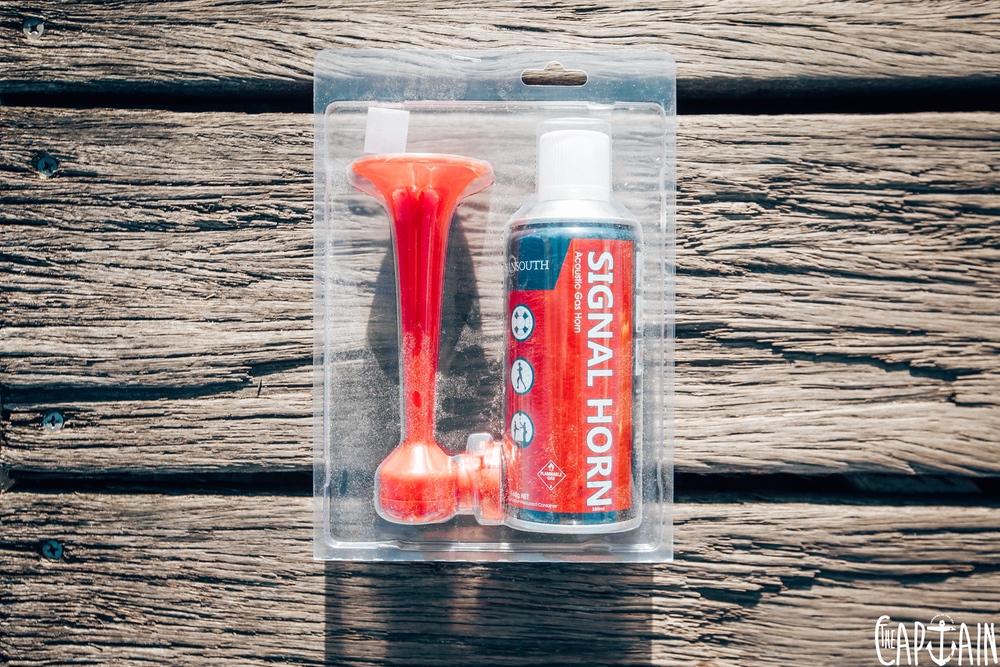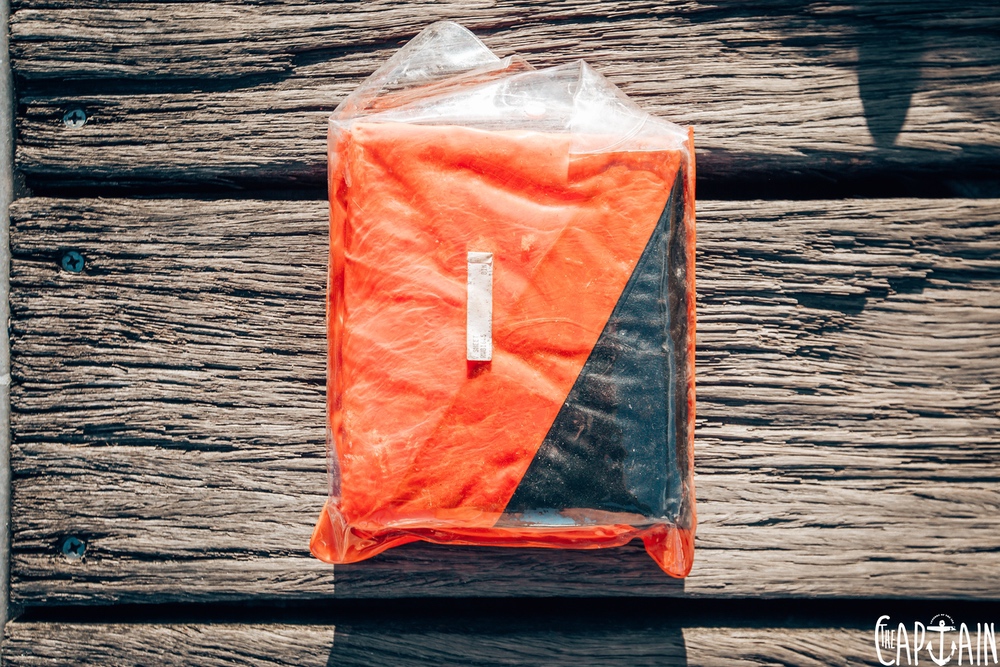The ocean can be a wild and beautiful beast. One minute you can be cruising along on calm, crystal-clear water under a blue sky, the next the sea has turned white and you’re being hammered by waves and gusting winds. Apart from Mother Nature, there are also hazards in the form of other boats, submerged floating objects, bommies and mechanical/electrical failure. However, if you’re organised and prepared for the very worst, you’ll always have the best chance of getting home safely. We’ve put together a guide to essential safety items you’ll need out on the water. Some of this safety equipment you’re legally obliged to carry, the rest you should probably take along just to be on the safe side.
Anchor with chain and rope
Think of your anchor like the parking brake on your car. You wouldn’t drive your car without one and you should never leave port without a working anchor. If you’re having mechanical trouble or need to hide from a storm in a protected bay, an anchor can literally be your lifeline. Make sure you’ve got the correct amount of chain and rope to suit the size of your vessel and learn how to set your anchor correctly. There are different types of anchors for a range of sea floor conditions, so make sure if you’re anchoring on sand you use a sand anchor and if you’re anchoring on reef you use a reef anchor. Anchors work more effectively with the stock holding horizontally. Chain is your best friend — if you have enough out, it’ll drive the anchor deeper in, rather than pulling it out. If you’re planning a multi-day trip on the water, it’s also a good idea to carry a spare. Anchors can get snagged in reef, lost or damaged.
Bailer/bucket/fire bucket with lanyard
A bucket might sound like a silly safety item, but they can actually be extremely handy in an emergency. If you’re taking on water, you can use a bucket or bailer to scoop water out of the boat and back into the briny. If you’re fighting a fire, you can use a bucket to collect sea water and extinguish the blaze. If you can’t reach the water over the gunwale of the boat, you’ll need to attach a lanyard (rope) to the bucket so you can lower and retrieve it more easily.
Bilge pump
The bilge of a boat is the lowest point in the hull. When you get caught in the rain, cop a wave over the bow or spill your coffee, this is where all that liquid ends up. The bilge pump’s job is to remove all superfluous fluids from inside the boat so you stay afloat. There are manual and power-operated bilge pumps, but the most common is a bilge pump with a float switch, which pumps the water out automatically. Legally, vessels with covered bilge(s) or closed underfloor compartments other than airtight void spaces must carry a bilge pump. It’s always a good idea to make sure the bilge is operating correctly before heading out. For added safety, you can run dual bilge pumps. This means you’ve always got a backup if the primary’s motor dies, or the pump get clogged with things like rubbish and fishing line.
Compass
Compasses have been around in some shape or form for more than 2000 years. The Vikings used a sun compass to locate true north, enabling them to sail long distances offshore. These days, most boats have a GPS chartplotter that can place you millimetre -perfect on top of your fishing spot. That said, technology can fail and having a trusty fluid-filled magnetic compass aboard when travelling offshore is always a good idea. Additionally, carrying a paper map/chart for your area of operation can often prove useful.
EPIRB
If you’re two or more nautical miles offshore, you’ll need to carry an up-to-date (according to manufacturer’s expiry date) EPIRB (emergency position-indicating radio beacon) rated at 406MHz and registered with AMSA (Australian Marine Safety Authority). These amazing little gadgets will instantly transmit your position to rescue services. Hang tight, the cavalry is on the way. For added safety when traveling offshore, consider also taking a SART (search and rescue transponder), which when activated will show up as a distress signal on other ship’s radar systems.
Fire extinguisher
If your boat has an electric start, electric motors, batteries, gas or fuel stoves, you’re required by law to have a fire extinguisher on board. Make sure you check it regularly for corrosion and ensure it’s in date.
Flares
You’ll need to carry red hand flares and orange smoke hand flares when heading for the open sea. The red flares can be used day or night. The orange smoke ones are only suitable for daytime use, primarily for attracting the attention of air rescue. Flares will expire, so ensure they’re always in date.
Lifejacket
One of the most vital pieces of safety equipment on your boat is a lifejacket. Legally, you’re always required to carry one for each person on board. In some situations (your age, level of risk, boat length/type, where you are and the time of day) you’ll need to be physically wearing the lifejacket.
Manuals and spares
You know those little white booklets that come with your new toys? Don’t throw them in the bin. Keep them handy inside a plastic sleeve folder stored in a dry area aboard your boat. Having access to all the info about your motor or GPS can save your life. You should also have spare engine parts like hoses, clamps and, if you’re going remote, a spare propellor.
Marine radio
If you’re heading offshore, a marine radio must be carried. It provides a direct line of communication with other vessels and shore-based Coast Guard and Marine Rescue stations. These organisations are also excellent sources of information about local weather and sea conditions, as well as information on any coastal bars you may need to navigate. Nowadays, the most common form of radio is the VHF and the distress channel is 16. You don’t need a VHF radio licence to buy a radio, but you’ll need one to legally operate it. The course can be done in one day and could save your life or someone else’s out on the water. If you’re travelling long distances offshore or into super-remote waters where a marine radio is out of range, it’s a good idea to also carry a SatPhone (satellite phone).
Paddles
You know the old saying about being up shit creek without a paddle? To help you avoid that messy predicament, if your vessel is under 6m and doesn’t have a second means of propulsion, you’ll need to carry paddles or oars/rowlocks.
Sound signal
Something that makes a loud noise, like an air horn, whistle or bell, is great for warning other ships of an imminent or potential collision. In an emergency situation, having something loud at your disposal to attract attention is essential.
Tools
You’re not legally required to carry tools on a boat, but a basic set can get you out of a world of trouble. Screwdrivers, spanners and pliers are essential. A pack of duct tape and cable ties can also help you out in a pinch.
V sheet
This one is self-explanatory. It’s a big orange sheet with a black V in the middle of it. This is to be used when you’re in distress in open waters. Placed facing the sky, the V sheet will alert aerial search parties. Minimum dimensions are 1.8m x 1.2m.
Water suitable for drinking
By law, you must carry 2L of spare fresh drinking water per person when heading offshore. This is supplementary to the water you’re already planning on consuming on your trip.
Waterproof torch
A floating waterproof torch can save your bacon in an emergency. It’s also a legal requirement to always carry one on board. It’s also a good idea to have independent light sources not wired to your boat’s battery. This means you can keep everything lit up overnight without draining the battery. A few head torches and lanterns are great for overnight adventures or emergences. A power pack can also come in handy for jump-starting your engine or powering up your devices.
Note: This is not an exhaustive list. Equipment requirements vary so check with your state marine authority.
MORE INFO
For more boating information and to check out The Captain’s boat ramp reviews across Australia head over to NRMA Insurance.












Recent Comments